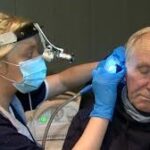Dealing with a stress fracture is more than just a matter of rest and patience. Recovery requires a well-thought-out approach that looks at the injury from every angle. A foot and ankle specialist offers targeted care that goes beyond basic treatment, helping patients heal faster and prevent future issues.
Customized Orthotics to Relieve Pressure and Support Healing
Not all feet are the same, and neither are stress fractures. A foot and ankle specialist creates custom orthotics designed to reduce pressure on the affected area and provide the support your foot needs to heal. These devices are tailored to your unique foot shape and the location of the fracture, ensuring optimal relief and alignment.
Unlike off-the-shelf solutions, custom orthotics work specifically to redistribute weight and minimize strain on the fracture site. By addressing the root cause of stress fractures—be it high arches, flat feet, or improper footwear—these orthotics not only support healing but also help prevent future injuries. It’s a personalized approach that takes your recovery to the next level.
Precision Rehabilitation Plans Focused on Long-Term Recovery
Healing a stress fracture isn’t just about the short-term. A foot and ankle specialist creates rehabilitation plans that prioritize long-term health and functionality. These plans often include a mix of strength training, balance exercises, and mobility work to ensure your foot regains its full range of motion and stability.
Rehabilitation is tailored to your activity level, whether you’re an athlete looking to return to competition or someone aiming for everyday comfort. Specialists carefully monitor your progress, adjusting exercises as you heal to avoid setbacks. This proactive approach ensures your recovery is not only complete but also sustainable, reducing the risk of re-injury.
Targeted Physical Therapy to Strengthen Affected Areas
Physical therapy is an essential part of stress fracture recovery, and a foot and ankle specialist knows how to target the right areas. They work with patients to strengthen the muscles surrounding the injured bone, improving overall foot mechanics and reducing stress on vulnerable areas.
This therapy often includes exercises to build resilience in your feet, ankles, and lower legs. By addressing weaknesses and imbalances, physical therapy helps you move more efficiently and reduces the chance of recurring fractures. With expert guidance, these targeted efforts lead to a stronger, healthier foundation for the future.
Nutritional Guidance to Support Bone Repair and Density
Healing from a stress fracture requires more than external care—what you put into your body matters, too. A specialist of foot and ankle can provide nutritional guidance to support bone health and repair. Recommendations often include increasing calcium, vitamin D, and protein intake, which are critical for rebuilding bone tissue.
Specialists also help identify any dietary deficiencies that might slow healing or make you prone to future injuries. Whether it’s through diet adjustments or supplements, this focus on nutrition adds another layer of support to the recovery process. Stronger bones mean a lower likelihood of facing similar injuries down the line.
Gait Analysis to Prevent Future Stress Fractures
The way you walk or run could be contributing to your stress fractures without you realizing it. A foot and ankle specialist conducts gait analysis to pinpoint any abnormalities in your stride that might be putting undue stress on your bones.
This analysis looks at factors like foot strike, weight distribution, and overall biomechanics. Once the specialist identifies issues, they offer strategies to correct them, such as recommending specific footwear or adjusting running techniques. By addressing these factors, gait analysis not only helps you heal but also protects you from repeat injuries.
Specialized Casting Options for Optimal Immobilization
Immobilizing a stress fracture is crucial for proper healing, but not all casts or braces are created equal. A foot and ankle specialist provides specialized casting options tailored to the type and severity of your injury. This ensures the fracture is stabilized without restricting necessary movement in other areas.
These custom solutions allow patients to maintain some mobility while protecting the fracture site. With the right cast or brace, healing progresses more efficiently, and the risk of complications decreases significantly. It’s a precise balance of immobilization and flexibility that supports faster recovery.
Ongoing Monitoring to Ensure Complete and Pain-Free Healing
Recovery doesn’t end when the pain fades. A foot and ankle specialist offers ongoing monitoring to ensure the fracture has fully healed and there’s no lingering weakness. Follow-up appointments and imaging help confirm that your bone density and structure are back to normal.
This continued care is essential for preventing future injuries. Specialists track your progress and provide adjustments to your rehabilitation or lifestyle as needed. By staying involved throughout the entire healing process, they ensure you return to your activities stronger and more confident than before.


